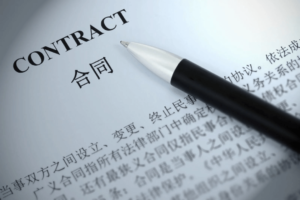In the rapidly evolving landscape of global innovation and intellectual property, China stands out as a critical battleground for inventors and businesses aiming to protect their inventions. With its unique legal framework and booming market, understanding the nuances of China’s patent system is essential for anyone looking to secure their intellectual property rights and navigate the competitive terrain successfully. This article delves into the three main types of patents in China—Invention, Utility Model, and Industrial Design patents—highlighting their significance, requirements, and the criticality of filing patents directly in China.
Table of Contents
ToggleInvention Patent: The Foundation of Technical Innovation
At the core of China’s intellectual property protection is the invention patent. This patent type is designed to safeguard innovative technical solutions, including new products, processes, or any significant improvements thereof. It encapsulates the traditional essence of patents by protecting substantial technological breakthroughs, such as novel pharmaceutical compounds, cutting-edge manufacturing processes, or unique technological improvements.
To be eligible for an invention patent in China, an idea must demonstrate novelty, creativity, and practical applicability. Crucially, China adheres to a ‘first-to-file’ system, prioritizing the rights of the first applicant over the original inventor in the absence of a prior application. This approach underscores the urgency of promptly protecting an innovation. An invention patent in China offers a protection period of 20 years from the filing date, emphasizing the value of securing rights early to safeguard long-term interests.
Utility Model Patent: Catering to Incremental Innovations
The utility model patent in China is tailored for simpler inventions or enhancements, particularly those relating to a product’s shape, structure, or combination. This patent type is ideally suited for products with rapid life cycles, where immediate, short-term protection is beneficial. The novelty requirement for a utility model patent is less stringent than for an invention patent, making it an attractive option for incremental improvements.
Despite its shorter duration of protection—10 years from the filing date—the importance of swiftly securing a utility model patent within China’s first-to-file system cannot be overstated. It offers a strategic tool for protecting innovations in a fast-paced market environment.
Industrial Design Patent: Safeguarding Aesthetic Innovations
An industrial design patent protects new designs pertaining to the shape, pattern, or a combination thereof, of a product. This type of patent is crucial in industries where design and aesthetics are paramount, such as fashion, furniture, and consumer electronics. To qualify, designs must be novel, creative, and aesthetically appealing. With a protection period of 15 years from the filing date, securing an industrial design patent promptly is vital to safeguarding valuable design assets.
The Imperative of Direct Filing in China
China’s distinctive first-to-file patent system creates a unique landscape, wherein the right to an invention goes to the first party to file a patent application, irrespective of the original inventor. This system poses significant risks to both domestic and international inventors who may have secured patents in other jurisdictions but not in China. Failure to file directly in China can lead to potential legal challenges, loss of market share, and reputational damage, especially given the possibility of another entity securing patent rights to the same invention within China.
Direct filing in China is not only more expedient but also provides a more solid defense against local infringers, compared to the often complex and slower process of international patent applications. In light of the substantial growth of the Chinese market, the strategic importance of filing patents directly in China cannot be overstated for businesses looking to protect their innovations and compete effectively.
Navigating the First-to-File System and Enhancing IP Protection in China
In contrast to many countries prioritizing the inventor’s original creation date or use of an invention, China operates on a first-to-file basis for patent rights. This system awards the patent to the first entity that files an application, regardless of who first conceived or used the invention. This fundamental difference underscores the urgency and strategic planning required for securing intellectual property (IP) rights within the Chinese market.
The Race to File
Given this first-to-file landscape, entities seeking patent protection in China must act swiftly. The process becomes a race against time to file patent applications before competitors, making the timely registration of patents a critical component of any IP strategy in China. This urgency is compounded by the country’s burgeoning market and technological landscape, where innovations emerge and evolve at an unprecedented pace.
Beyond Patent Filings: The Strategic Role of NNN Agreements
While prompt patent filing is indispensable, comprehensive IP protection strategies in China must extend beyond this. The use of Non-Disclosure, Non-Use, Non-Circumvention (NNN) Agreements has emerged as a vital tool in protecting inventors and companies against the potential pitfalls of the first-to-file system. These agreements are tailored to the Chinese legal context, offering robust protection against the unauthorized disclosure, use, or circumvention of proprietary information and technologies.
NNN Agreements are crucial in preventing local partners or manufacturers from claiming ownership of an invention by filing a patent application themselves. They serve as a legal safeguard, ensuring that the collaborative or manufacturing process does not inadvertently compromise the inventor’s or original company’s ability to secure patent rights.
Crafting and Enforcing NNN Agreements
The effectiveness of an NNN Agreement hinges on its careful drafting to ensure compliance with Chinese laws and its enforceability within the Chinese legal system. This necessitates collaboration with legal professionals specializing in Chinese IP law to navigate the nuances of crafting enforceable agreements.
Moreover, readiness to enforce these agreements through legal action if breached is an essential part of the strategy. Engaging in the legal system in China, with its unique procedures and practices, demands a proactive stance and, often, local legal representation to advocate effectively for the protection of IP rights.
The First-to-File Imperative
The shift towards a strategic blend of prompt patent filing and the use of protective contracts like NNN Agreements underscores a nuanced approach to IP protection in China. This dual strategy not only aligns with the first-to-file principle but also fortifies inventors and businesses against the complexities of protecting innovations in a highly competitive and rapidly evolving market. Adapting to this environment is not just about securing a place in the present market but ensuring a sustainable and protected future for one’s innovations in China.
Conclusion
The Chinese patent system offers a robust framework for protecting technological and design innovations through its invention, utility model, and industrial design patents. Given the criticality of the first-to-file principle, inventors and businesses must act swiftly when filing patent applications in China. Understanding and navigating this system is essential for securing intellectual property rights and achieving competitive advantage in one of the world’s most dynamic markets.
FAQ: Understanding Patent Protection in China
1. What types of patents can be filed in China? In China, there are three main types of patents: Invention Patents, which cover new technical solutions for products or processes; Utility Model Patents, which protect new technical solutions applied to the shape, structure, or combination thereof, of a product; and Industrial Design Patents, which safeguard new designs of the shape, pattern, or their combination, of a product.
2. What are the key requirements for an invention patent in China? To qualify for an invention patent in China, the idea must demonstrate novelty, creativity, and practical applicability. It is important that the invention is not known to the public before the filing date, as it must represent a significant technical advancement.
3. How long does protection last for each type of patent in China? Invention patents offer 20 years of protection from the filing date. Utility model patents provide 10 years of protection, and industrial design patents grant 15 years of protection from the filing date.
4. What is the ‘first-to-file’ system in China? China operates under a ‘first-to-file’ system, meaning the first person to file a patent application in China is granted the patent rights to the invention, regardless of who originally invented the product or process. This system emphasizes the importance of filing patents in China as early as possible.
5. How does the ‘first-to-file’ system impact foreign inventors? Foreign inventors must be aware that holding a patent in another country does not automatically grant them patent rights in China. If another entity files a patent for the same invention in China before the original inventor does, the filer can gain exclusive rights in the Chinese market. This underscores the necessity for foreign inventors to file patents in China promptly.
6. Is there a difference in novelty requirements between invention patents and utility model patents? Yes, the novelty requirement for a utility model patent is lower than that for an invention patent. This makes utility model patents a suitable choice for incremental advancements or simpler innovations.
7. Why is it important to file patents directly in China? Directly filing patents in China is crucial due to the country’s first-to-file system. It ensures faster processing, stronger legal protection against local infringers, and mitigates the risk of losing the right to your own invention in the Chinese market. Direct filing is particularly important given the significant growth and competitive nature of China’s market.
8. Can international patent applications protect an invention in China? While international patent applications can offer protection in multiple jurisdictions, including China, they are generally more complex and take longer to process than direct filings. For quicker and more effective protection in China, direct filing is recommended.
9. What risks do businesses face if they do not file patents in China? Failing to file patents in China can expose businesses to substantial risks, including legal challenges, loss of market share, and reputational damage, especially if another entity secures patent rights to their invention in China.








